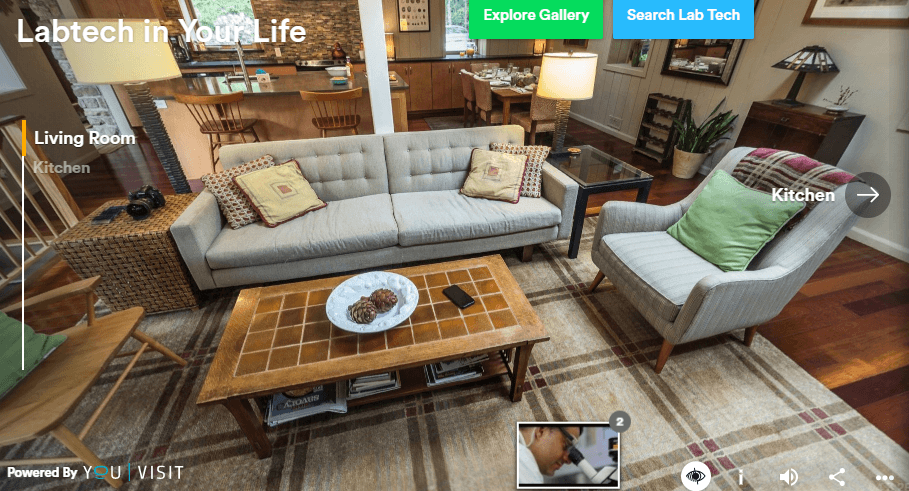You may be surprised to learn that many of the items found in the average American home or office were created with the help of government funding. In fact, some of the world’s most ubiquitous products like GPS were spawned from federally funded research and development conducted at Federal laboratories, universities, and other research organizations.
To maintain America’s leadership in global innovation, the Federal Government invests approximately $150 billion each year in research and development. To improve our quality of life and grow our economy, it’s important to speed up the cycle of getting these discoveries from the “lab” to the real world. That is why the President’s Management Agenda includes a Lab-to-Market Cross-Agency-Priority (CAP) Goal, which focuses on reducing administrative and regulatory barriers and enhancing partnerships to make it easier to take technology from federally-funded innovations in a laboratory to the American marketplace.
About 1/3 of cutting-edge, federally funded research is done in Federal agency laboratories. The LabTech in Your Life Virtual Experience from the Federal Laboratory Consortium for Technology Transfer, created by the Federal Laboratory Consortium for Technology Transfer (FLC), provides an interactive platform that showcases commonly used, everyday technologies that started with this government research. LabTech at Home is the platform’s first virtual environment where you can explore 7 different tour stops featuring nearly 50 technologies from across 7 different Federal agencies. Here are a few of our favorite technologies displayed throughout the virtual home:
- Instant Mashed Potatoes: These time-saving taters came to your dinner table thanks to the U.S. Department of Agriculture Eastern Region Research Center. In the 1950s, chemists and food technologists developed a three-step cooking process that resulted in shelf-stable, dehydrated potato flakes. This spud-tacular innovation helped temper potato overproduction and was part of a larger market shift towards convenient options for mealtime as more women entered the workforce.
- Cell Phone Clock Time: Ever wonder how your cell phone knows what time it is automatically, and adjusts to new time zones like magic? In 1967, one second in time was defined by the vibrations of a cesium atom, and the basis for the cesium atomic clock was born. Since then, U.S. Department of Commerce’s National Institute of Standards and Technology (NIST) has improved the technology. The newest NIST-F2 atomic clock is three times as accurate as the previous version, so you can rest easy knowing your morning alarm is accurate.
- Dynamic Disposable Diapers: Twenty-five years ago, the U.S. Department of Energy’s Los Alamos National Laboratory used their expertise in nuclear weapons to help a multinational consumer goods corporation with a different kind of waste. To keep fluids away from baby’s skin while wearing disposable diapers, researchers used computational fluid dynamics to understand liquid flows through fibrous materials. Not only did families get a more reliable diaper, but the project validated complex analyses in nuclear science programs, adding to a body of knowledge critical to national security.
- Mosquito Trap: In an effort to take a bite out of the mosquito population and reduce the danger of the dengue virus, the U.S. Army’s Walter Reed Army Institute of Research invented a lethal mosquito trap. The species of mosquito that primarily transmits dengue only lays eggs in standing water, so the trap features a small canister of water with pesticide. After effective field tests, the traps were used in Key West, Florida during the 2010 dengue outbreak to help mitigate the risk to the public. Now, these traps are available for use in your own backyard.
- GPS: Where in the world did Global Positioning Software (GPS) originate before it made it into the palm of your hand or the dashboard of your car? In 1979, NASA’s Jet Propulsion Laboratory needed a way to precisely locate a satellite that was measuring the height of Earth’s oceans. This stellar innovation was able to pinpoint the satellite’s location to within two centimeters and led the way to the GPS maps we’re familiar with today.
Explore more everyday items that began as Federally developed innovations in the LabTech in Your Life Virtual Experience from the Federal Laboratory Consortium for Technology Transfer. This research didn’t make it to the marketplace alone. You can develop the next wave of everyday technology by connecting to world-class researchers, equipment, and technology through FLC Business – a robust database of easy-to-search Federal laboratory resources.

